Cat Eye Corner Has Discharge_Tear Stain Problem Analysis
People often say a cat's eyes are windows to the universe, and when they are clear and bright, it's truly captivating. However, many cat owners notice that their pet's "starry ocean" can sometimes be spoiled by sticky, dirty substances, most commonly discharge at the corners of the eyes, or persistent tear stains. This stuff looks annoying, is hard to wipe off, and more worryingly, what secrets might it hide? Don't worry, today we will dig into those little matters around a cat’s eye corners.
First, key point: discharge or tear stains at a cat's eye corner are not necessarily illness, but certain specific situations must be taken seriously and require timely veterinary care.
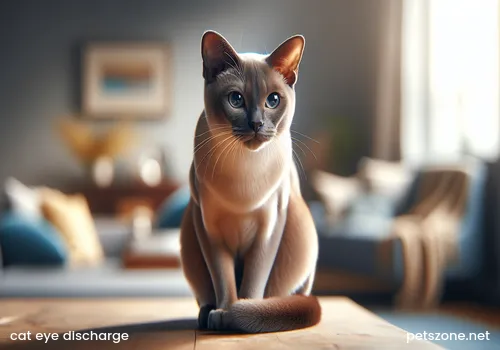
After raising cats for some time, you’ll probably notice that when your cat just wakes up, there’s a bit of discharge at the eye corners similar to human "eye gunk," usually light brown or translucent white. When dry, it becomes small hard flakes that are easy to wipe off. This is similar to the normal physiological phenomenon when we wake up and find some eye discharge, caused by tears mixed with some metabolic substances around the eyes. This "sleepy eyes" state can be gently cleaned without much worry.
But if there’s an increase in discharge, change in color, a sticky texture, or even two alarming tear stain lines, then caution is warranted. This often signals more than just "a deep sleep"; the body might be saying, "I might be a bit uncomfortable!"
Unraveling the truth: Behind the causes of tear stains and abnormal eye discharge in cats
Normal tear flow in cats starts from the lacrimal gland, lubricates the eyeball, then drains through the nasolacrimal duct at the eye corner into the nasal cavity. If any part of this process malfunctions, tears overflow at the eye corner, causing tear stains, or abnormal discharge due to inflammation. The causes for disruption are varied, ranging from environmental irritants to internal diseases.
- Structural factors: congenital troubles
This mainly concerns certain cat breeds, especially round-faced, flat-nosed "brachycephalic" cats like Persian, Exotic Shorthair, and Himalayan cats. Their facial structures often feature more curved or narrow, sometimes underdeveloped, nasolacrimal ducts, making tear drainage difficult and leading to accumulation at the eye corners, which eventually causes tear stains.
It's like fitting a sports car with a convoluted drainage pipe; no matter the effort, water will back up. For these cats, tear stains tend more to be a "cosmetic issue," but chronic dampness can breed bacteria and cause inflammation.
Besides, entropion (eyelids rolling inward, eyelashes rubbing the eyeball) or distichiasis (ingrown eyelashes) can constantly irritate the eyes, increasing tear production and even causing corneal damage and inflammation. This is not trivial and requires veterinary evaluation; severe cases might need surgical correction.
- Environmental irritants and allergies: invisible enemies
Cat eyes are very sensitive to the environment. Dust, powder (especially dusty bentonite cat litter), smoke, perfumes, cleaning agents, and even some plant pollens may stimulate the eyes, increasing tear production to wash away the irritants. Imagine getting sand in your eyes—tears flow, right? Cats experience the same.
Some cats may be allergic to certain food or environmental substances, with symptoms extending beyond itchy skin to eye redness and excessive tearing. Switching to low-dust cat litter, maintaining a clean home environment, and using air purifiers can help reduce these irritations. Dietary adjustments (such as hypoallergenic food) may also alleviate allergy-related tear stains.
- Infectious diseases: a serious health alert
This is often the primary cause of abnormal eye discharge (beyond mere tear stains). Various viruses, bacteria, and other pathogens may cause eye infections in cats, with conjunctivitis being the most common.
- Conjunctivitis: The conjunctiva is the pinkish membrane covering the eyeball and inner eyelids. When inflamed, it becomes red and swollen; cats may squint, blink frequently, and produce lots of discharge. The color and character of the discharge give key clues to the cause:
- Clear or watery discharge: Typical of early viral infections (e.g., Feline Herpesvirus), allergies, or mild irritations.
- White, yellow, or yellow-green purulent discharge: Usually indicates bacterial infection. Such discharge tends to be sticky and forms hard crusts when dried, making it hard to wipe off.
- Dark red or dark brown: May be tear stains formed by oxidized porphyrins, but if accompanied by other symptoms, could indicate infection or inflammation. Rarely, dark orange or deep yellow discharge with blood streaks or lens opacity might suggest eye trauma.
- Feline Herpesvirus (FHV-1): This is a major cause of feline eye infections, very common. Most cats may carry this virus, which can reactivate under stress (moving, vet visits, new family members, etc.) or immune suppression. FHV-1 often causes conjunctivitis, corneal ulcers (surface eye injury), and sometimes sneezing or nasal discharge indicating upper respiratory infection. Kittens may have severe infections with so much discharge they can’t open their eyes. Chronic recurrence may lead to corneal damage and even blindness.
- Chlamydia, calicivirus, and other pathogens: Can also cause conjunctivitis and eye symptoms.
- Nasolacrimal duct blockage: drainage system failure
Besides structural issues, the nasolacrimal duct may be blocked by inflammation (like conjunctivitis spreading), or foreign bodies (dust, hair), preventing normal tear drainage and causing tears to overflow. This is like a clogged sewer causing water to back up. Vets can examine duct patency using fluorescein staining and other tests.
- Other potential causes: details you can’t ignore
- Foreign bodies: A hair or grain of sand in the eye can cause irritation and tearing.
- Corneal damage or ulcers: Injuries to the eye surface are very painful, causing excessive tearing, squinting, and often discharge.
- Dry eye syndrome: Paradoxically, lack of tears may stimulate sticky discharge.
- Eyelid or third eyelid abnormalities: Besides entropion, other anatomical issues may impair tear drainage or irritate the eye.
- Uveitis, glaucoma, eye tumors, etc.: More serious eye diseases can cause abnormal eye symptoms and discharge.
- Ear infections: Though seemingly unrelated, ear discomfort sometimes triggers neurological reflexes increasing tearing.
- Diet: Some consider poor diet (too oily, too salty, lacking trace elements, or allergies) may affect tear secretion or worsen tear stains. Although not primary, a healthy balanced diet benefits cat health overall.
Gentle "Eye Care Exercises": How to Clean Properly
For normal "sleep eye gunk" or mild tear stains, regular cleaning is necessary.
- Prepare tools: Clean, soft cotton balls, gauze, or pet-specific wet wipes. Prepare warm water or saline solution.
- Be gentle: Moisten cotton or gauze with warm water or saline (not too wet to avoid water entering the eye), gently wipe away discharge around the eye corner. For hardened flakes, soften by moistening before wiping. Avoid hard scraping to prevent skin damage around the eyes.
- Direction: Wipe gently along the eye edge from inner to outer corner.
- Wiping tear stains: For established tear stains, patience is key. There are pet-specific tear stain removers available with varying ingredients, some containing natural components like witch hazel or colloidal silver, claiming antibacterial effects. Use mild, vet-recommended products and avoid unknown or harsh substances, especially hydrogen peroxide (H2O2) or human eye products to prevent eye damage. Keeping the eye area dry after cleaning is also important.
- Trim fur: For cats with long fur around eyes that traps tears, careful regular trimming around the eye corners helps.
- Isolation and cleaning: If multiple cats live together and a contagious disease is suspected, isolate the sick cat and enhance environmental disinfection (such as diluted bleach) to reduce virus spread.
Warning Signs: When You Must Take Your Cat to the Vet
Although many eye corner discharges are minor, the following signs mean you must not hesitate and should quickly seek veterinary help:
- Change in discharge character or color: From clear to yellow, green, thickened, or bloody discharge.
- Sudden increase and persistence of discharge: More than normal “sleep eye gunk” and not resolving.
- Redness and swelling of eyes: Obvious redness and swelling of eyelids or eyeball surface.
- Frequent blinking, squinting, or inability to open eyes: Suggests pain or severe discomfort. Protrusion of the third eyelid may also indicate pain or inflammation.
- Scratching eyes with paws or rubbing face against furniture: Indicates intense itchiness or discomfort.
- Cloudiness, white film, or ulcers on the eyeball surface: Visible irregularities or foreign bodies on the eye surface.
- Accompanying systemic symptoms: Such as sneezing, nasal discharge, coughing, lethargy, loss of appetite, or fever. This may indicate the eye problem is part of a systemic illness, especially feline herpesvirus infection.
- Sudden worsening or foul smell of tear stains: Suggests secondary bacterial infection.
- Unilateral eye problems: Though both eyes may be affected, symptoms in one eye may indicate foreign body, localized injury, or nasolacrimal duct blockage.
Veterinarians will conduct detailed exams, including fluorescein staining to detect corneal ulcers, checking nasolacrimal duct patency, and may require testing of discharge or blood work. Diagnosis directs treatment plans such as antibiotic eye drops, antiviral medications, or nasolacrimal duct flushing. Never self-medicate, especially with human eye drops or antibiotics.
Prevention First: Daily Care and Management
Now that we understand possible causes, prevention and daily care can be guided accordingly:
- Maintain a clean environment: Regular cleaning to reduce dust and irritants, and choose low-dust cat litter.
- Regular grooming and trimming: To avoid fur irritating the eyes.
- Healthy, balanced diet: Ensure cats get adequate nutrition and hydration.
- Regular vaccinations and deworming: Especially the feline triple vaccine (including feline herpesvirus component) to prevent or lessen viral infection symptoms. Regular parasite control is also important, as some parasites can affect the eyes.
- Stress reduction: Provide a stable, safe living environment to minimize unnecessary stress.
- Daily observation: Spend a moment each day to watch your cat’s eyes and detect abnormalities early for prompt intervention.
- Routine veterinary check-ups: Even if the cat seems healthy, regular vet exams help detect potential issues early.
In summary, cat eye corner discharge and tear stains may be trivial or a body’s SOS. As responsible cat owners, consistent observation and scientific cleaning are essential basics. If abnormalities occur, don’t delay seeking professional vet help; this is the responsible way to care for your furry friend. After all, guarding that "starry ocean" is our sweet burden.
References:
- VCA Animal Hospitals - Eye Discharge (Epiphora) in Cats
- Tencent News - Feline Conjunctivitis and Its Prevention and Treatment
- VCA Animal Hospitals - Feline Herpes Viral Conjunctivitis
- WebMD - Cat Eye Discharge and Eye Problems
- Tencent News - Why Do Cats Always Have Tear Stains and Look Dirty? What to Do?
- Tencent News - Feline Conjunctivitis
- South Texas Veterinary Ophthalmology - Feline Herpesvirus
- PetMD - Conjunctivitis in Cats (Cat Pink Eye)
- NetEase - What Causes Cat Tear Stains? Understand These Points to Know What to Do!
- Dog Being - 【Feline Herpesvirus】Veterinarian Lin Yingzhen
- Pet Hospital - What to Do About Red, Swollen, and Tearing Cat Eyes?
- PubMed - Feline herpesvirus-1: ocular manifestations, diagnosis and treatment options
- Industry Information - Pet Care Knowledge—What You Must Know About "Feline Conjunctivitis"
- Petmily - Cats Always Tearful? 6 Tips to Care for Cat Tear Stains
- DVM360 - Feline Conjunctivitis. A Cat Is Not a Small Dog!
- WebMD - Cat Runny, Watery Eyes: Causes and Treatments
- Maddie's Fund - Eye Discharge in Cats
- Good-Quality Fast Pet - Do Cats Cry? What Are Those Tear Stains on Their Faces?
- Cloud 9 Vets - Types Of Cat Eye Discharge And What They Mean
- Douban - Cat Eye Disease Part---Cat Conjunctivitis and Keratitis
- Monster Tribe - What to Do When a Cat Tears Only One Eye? Causes and Improvement for Cat Tear Stains and Increased Tears
- Vetwest Veterinary Clinics - Conjunctivitis in Cats
- Woonona Petfoods - Understanding Tear Stains in Cats and Dogs: Causes and Solutions
- Portland Veterinary Emergency and Specialty Care - Feline Herpesvirus: Ocular Manifestations
- Litter-Robot - Epiphora in Cats, AKA Cat Tear Stains
- PetMD - Feline Herpesvirus 1 (FHV-1) Infection
- Eye Envy - Tear Stain Remover Solution For Cats
- Bond Vet - Conjunctivitis In Cats: Symptoms, Treatment, and More
- QQ News - Complete Guide to Feline Herpesvirus Symptoms and Diagnosis
- Pet Hospital - How to Treat Cat Conjunctivitis, Reliable Pet Clinics in Changsha Recommendation
- Xiaoniangyu Maine Coon Cattery - Herpesvirus
- ProcessOn - Cat Family Medical Encyclopedia Reading Notes
- Pet Hospital - Cat Eye Corner Has Brown Discharge
- Royal Canin - Abnormal Cat Eye Discharge Is a Health Alert! Common Causes and Daily Care Methods All-in-One
- QQ News - Cat Upper Respiratory Issues Due to Herpesvirus Infection (Cat Viral Rhinotracheitis)
- Reed Cat Litter - 【Cat Health Care】Cat Tears and Eye Discharge, Beware of 6 Eye Diseases!
- Buddycare - Cat Tear Stain Remover
- Jiaochong Doctor - Understand Feline Herpesvirus
- Cornell University College of Veterinary Medicine - Conjunctivitis
- Maohaoduo - How to Identify 4 Common Cat Eye Discharges! Cat Eye Diseases You Must Not Ignore
- What Is Worth Buying - Notice for Raising Cats | How to Raise a Good Cat
- Zhihu - Is Buying Pets on 58.com Reliable?
- NetEase - A Few Days After Getting a Kitten, a Cherry Appeared on Its Eye?| Ulcer | Herpes | Conjunctivitis
- NetEase - Cat Eye Showing Heart-Shaped Spots, Thought a Miracle, Almost Cost Its Life
- Xiaojudeng Network - As an Ophthalmologist, What Are Your "Advice I Tell Everyone but They Just Don’t Listen"?
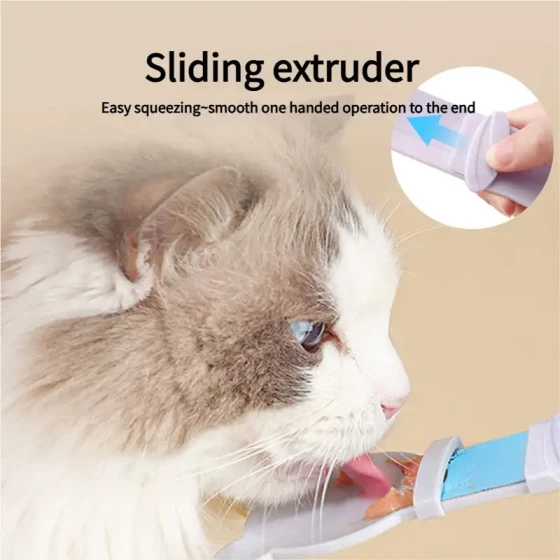

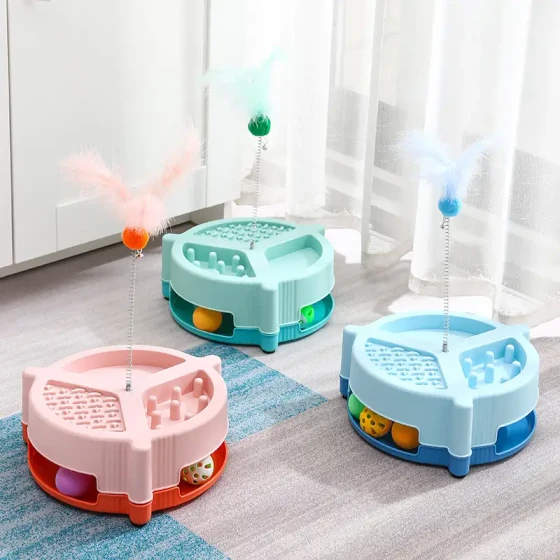
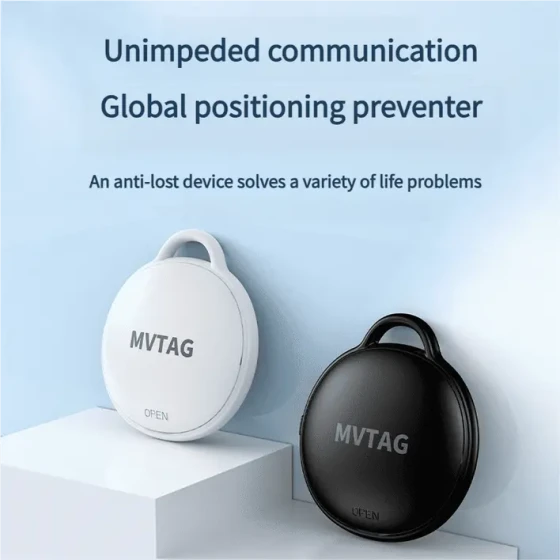
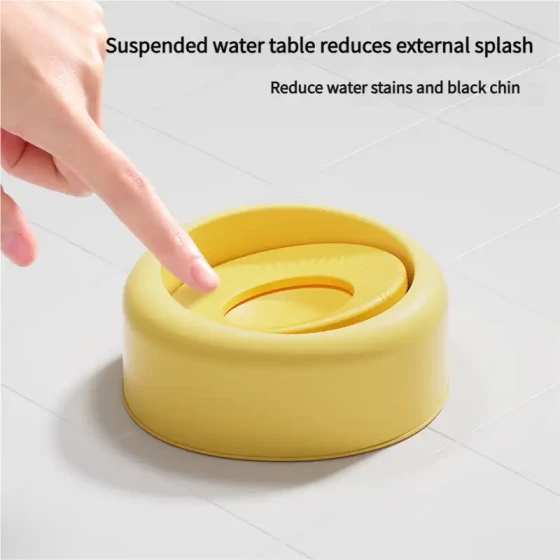
-560x560.webp)